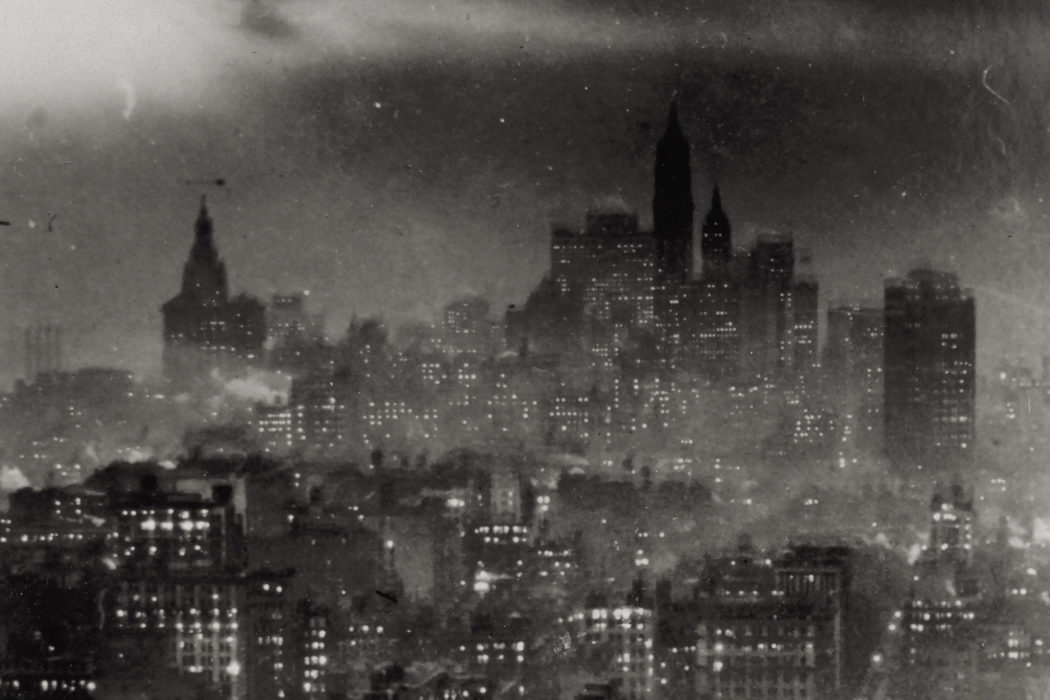SOMETIME AFTER MIDNIGHT, THE glow of Manhattan appeared over the eastern horizon. The train carrying ‘Abdu’l-Bahá on the final leg of his long trip back east slowed as it approached the city limits of Jersey City, and finally stopped at the Pennsylvania Railroad Terminal on the western shore of the Hudson River. The passengers disembarked and boarded the 23rd Street Ferry, which pulled away from the ferry terminal, turned against the Hudson’s current, and pushed north for four miles along the middle of the channel. Off to starboard the towers of lower Manhattan pricked the night sky with a thousand points of light.
Juliet Thompson stood at the end of the pier at the West 23rd Street Ferry terminal in Manhattan, tracking the chain of lights that embossed the small steamship on its dark watery approach. She made out Dr. Fareed, the translator, standing on deck, and, next to him, ‘Abdu’l-Bahá seated on a deck chair. He stood, stepped into the ship’s bright cabin, and, a few minutes after 1 a.m., walked down the gangplank to meet her.

‘Abdu’l-Bahá set foot in New York for the first time in almost four months. He had left the city on July 23 to escape the summer heat, which had beaten down in record temperatures through the month of July, forcing New Yorkers out of their sweltering tenements at night. They slept on the grass in the parks at the Battery, and thousands stretched out in Riverside Park beneath the cool breeze that wafted in off the Hudson, just a few hundred feet from ‘Abdu’l-Bahá’s rented house.
In the 113 days since then, as the temperature in New York steadily subsided from the high 90s to the mid-50s, ‘Abdu’l-Bahá had completed the longest overland journey of his life, engaging with a vast diversity of North Americans: the painters, playwrights, and patricians who summered in Dublin, New Hampshire; the religious liberals of Boston; the New Thought groups, the Vedantists, the Transcendentalists, the opera singers, and the nature enthusiasts of Green Acre; the English-speaking Protestants, French Canadian Catholics, and the socialists of Montreal; the East Indian students and poor African American residents of Chicago; the millworkers and industrialists of the Midwest; the farmers and the Mormons in Salt Lake City; newspapermen and women everywhere; and the practical minds of California: Japanese immigrants, African American servants, Reform Jews, university students, faculty members, college presidents, and government officials of the San Francisco Bay Area. Now he had returned to New York, the most diverse place of them all, where his journey had begun back on April 11 when he disembarked from the SS Cedric at these very piers.
From the ferry terminal ‘Abdu’l-Bahá’s automobile went north, although we don’t know the route. They may have set out east along West 23rd Street toward Broadway, and then north through the glowing canyons of the boulevard past the theatres, through brightly lit Times Square, around the statue of Columbus at the corner of the black expanse of Central Park, and then up past the Hotel Ansonia into the Upper West Side. Or the driver may have turned left out of the ferry terminal, skirted the dark flowing Hudson on 13th and then 12th Avenue, skipped inland at West 59th Street around the locomotives parked at the south end of the New York Central & Hudson River Railway, and then up West End Avenue to Mrs. Champney’s house on West 78th Street, where ‘Abdu’l-Bahá would again take up residence for his final three weeks in America.






